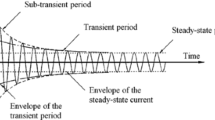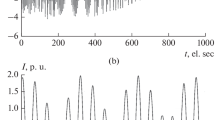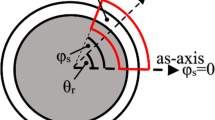Abstract
The transient skin effect is solved for the rectangular open and semi closed slots containing a massive conductor. The solution is applied to the Joule losses and to the analytical calculation of the air gap torque and the stator currents of the induction machine exposed to the three-phase short circuit. The calculation of the Joule power losses under transient conditions has been accomplished, especially, for induction machines of the middle- and high-power range. This becomes important in dynamically controlled induction machines, especially when torque cycles of approximately 100 ms or less occur. Never before have the copper losses been evaluated completely under these transient conditions. For the calculation of the losses, the direct proportionality of the losses between torque and rotor bar current can be used. Furthermore, the results of the transient skin effect can find application in the operational behavior of the induction machine. The consideration of the transient skin effect of the rotor is necessary for calculating currents and torques. Until now, state of the art has only provided an analytical solving of the skin effect free model. Aiming to apply the given rotor geometry, this paper derives an approach which includes the transient skin effect, applying it on the three-phase short circuit of the idle running induction machine.
Similar content being viewed by others
Abbreviations
- b Cu :
-
Width of conductor bar
- b n :
-
Width of slot
- f (t):
-
Dimensionless function of time
- H :
-
Magnetic field strength
- h Cu :
-
Height of conductor bar
- i, I :
-
Current (instant-, RMS-value)
- k :
-
Index
- L 1, L 2 :
-
Self inductance (stator, rotor)
- L h :
-
Coupling inductance
- L F :
-
Self inductance of substitute winding
- ξ :
-
Reduced conductor hight
- ψ α , ψ β :
-
Flux-linkage, stator (real, imaginary—part)
- ψ dF , ψ qF :
-
Flux-linkage, substitute rotor winding
- i d , i q :
-
Rotor-current (real, imaginary—part)
- L σ n :
-
Slot leakage inductance (part of slot height)
- p :
-
Number of pole pairs
- R 1, R 2 :
-
Resistor (stator, rotor)
- R 2bar :
-
Rotor bar resistance
- s :
-
j ω + σ (complex angular velocity)
- t, T :
-
Time, time-constant
- u :
-
Voltage (instant value)
- κ :
-
Conductivity
- μ :
-
Permeability
- λ :
-
Constant
- ω L :
-
Mechanical angular velocity
- ψ d , ψ q :
-
Flux-linkage, rotor (real, imaginary—part)
- i α , i β :
-
Stator-current (real, imaginary—part)
- i dF , i qF :
-
Rotor-current, substitute rotor winding
References
Vogt K (1995) Elektrische Maschinen: Berechnung rotierender elektrischer Maschinen. VCH Verlagsgesellschaft, Weinheim
Baule B (1945) Die Mathematik des Naturforschers und Ingenieurs, Bd. VI Partielle Differentialgleichungen. Verlag von S. Hirzel, Leipzig
Sikora R, Lipinski W (1974) Die Ersatzschaltungen der zweidimensionalen nichtstationären Stromverdrängung in einer Maschinennut. Arch Elektrotech 56: S.252–S.254
Prassler H (1974) Kettenleiter-Netzmodell für das elektromagnetische Feld in den Nuten elektrischer Maschinen. Arch Elektrotech 56: S.212–S.216
Mocanum CI (1973) Nicht stationäre Stromverdrängung in einer Maschinennut von rechteckigem Querschnitt. Arch Elektrotech 55: S.164–S.170
Beckert U, Neuber W (1986) Theorie des dynamischen Verhaltens von Asynchronmotoren mit Hochstabläufer. Elektrie 40: S.457–S.460
Hannakam L (1960) Entwicklung geschlossener Näherungsbeziehungen für unsymmetrische Stoßkurzschlüsse der synchronen Schenkelpolmaschine. Arch Elektrotech 45: S.118–S.156
Hannakam L (1965) Spannungen und Drehmomente der synchronen Schenkelpolmaschine bei unsymmetrischen Stoßkurzschlüssen. Arch Elektrotech 50: S.91–S.100
Author information
Authors and Affiliations
Corresponding author
Rights and permissions
About this article
Cite this article
Köhring, P. Closed solution of the transient skin effect in induction machines. Electr Eng 91, 263–272 (2009). https://doi.org/10.1007/s00202-009-0136-8
Received:
Accepted:
Published:
Issue Date:
DOI: https://doi.org/10.1007/s00202-009-0136-8




